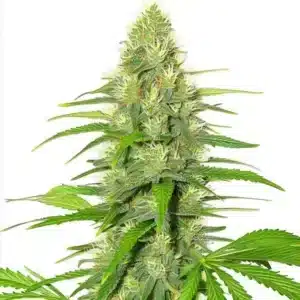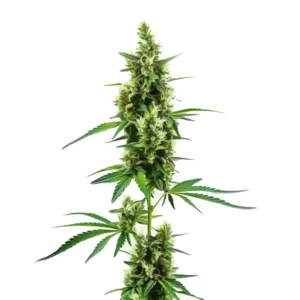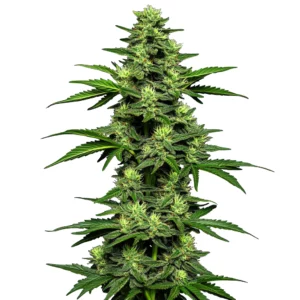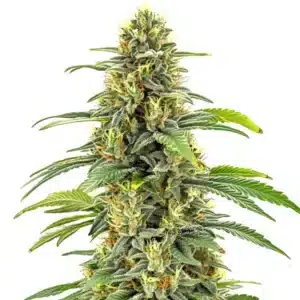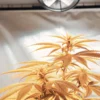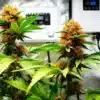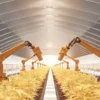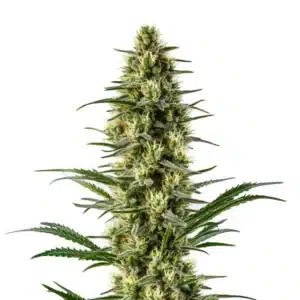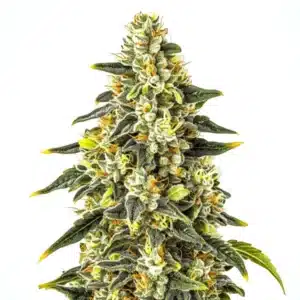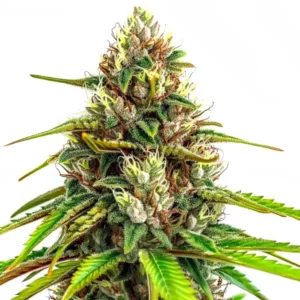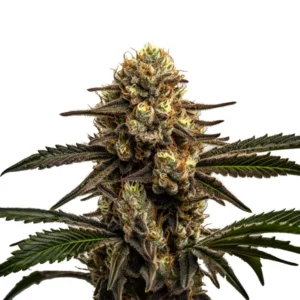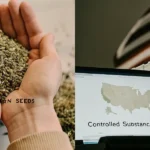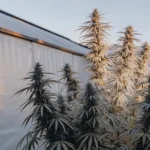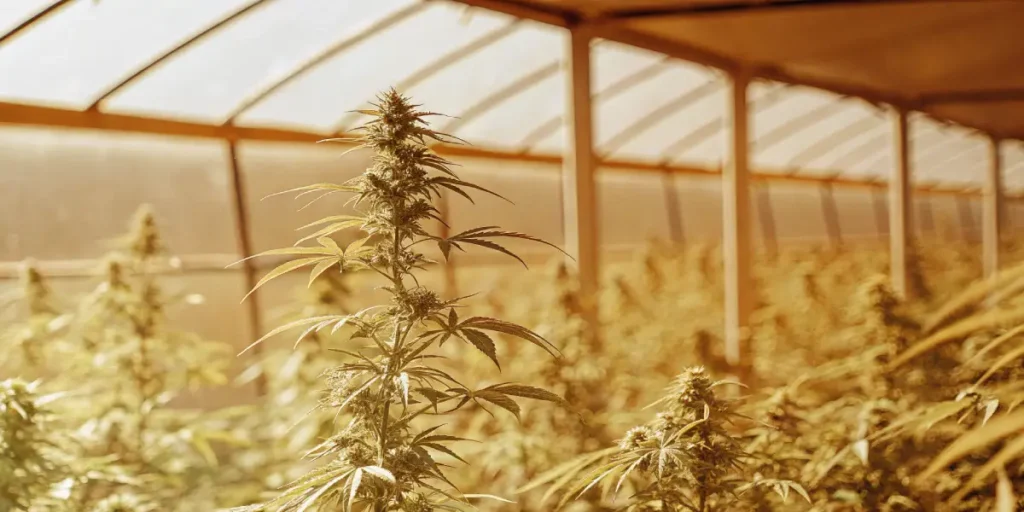
Plant Training Mistakes Cannabis
Training cannabis plants can be a rewarding technique to maximize yield and improve plant health. However, even seasoned growers make plant training mistakes in cannabis cultivation. Identifying these errors early can save time and resources. Proper plant training involves manipulating the plant structure for better light exposure and airflow.
Many first-time growers and even some veterans fall into the trap of common cannabis plant training errors. Missteps in this process can lead to reduced yields or even damage to your plants. It’s essential to recognize these pitfalls and learn how to correct plant training mistakes in cannabis to ensure optimal growth.
Recommended Strains
White Widow
|
|
THC | 18% - 25% (Medium) |
|
|
Type | Feminized |
|
|
Yield | High |
|
|
Phenotype | 45% Indica / 55% Sativa |
GG4
|
|
THC | 27% (High) |
|
|
Type | Feminized |
|
|
Yield | High |
|
|
Phenotype | 40% Indica / 60% Sativa |
At Blimburn Seeds, strains such as White Widow, Gorilla Glue 4, and Blue Dream are excellent choices for those practicing plant training. These strains respond well to training techniques when done correctly, leading to bountiful harvests.
Overtraining Your Plants
One of the most frequent cannabis plant training pitfalls to avoid is overtraining. While training can enhance growth, excessive manipulation can stress the plant. Stress can slow down growth or even cause the plant to hermaphrodite, which is when a plant develops both male and female flowers.
It’s crucial to give your plants time to recover between training sessions. If you’re constantly bending, topping, or defoliating, your plants may not have enough time to heal. Consider the strain’s growth rate and adjust your training schedule accordingly. For instance, the robust growth of Gorilla Glue 4 can handle more frequent training compared to slower-growing strains.
Overtraining, a common cannabis plant training error, often stems from a misunderstanding of the plant’s natural growth cycle. Growers eager to see quick results might push their plants too hard, not realizing that patience is a vital part of the process. Allowing plants to naturally expand between training sessions can lead to healthier growth.
Moreover, knowing the specific needs of each strain can prevent overtraining. Some strains naturally resist more aggressive techniques and require a gentler approach. By observing and responding to each plant’s cues, growers can avoid these common pitfalls and ensure their efforts lead to rewarding harvests.
Recognizing Signs of Overtraining
When plants are overtrained, you’ll notice signs like drooping leaves, slow growth, and discolored foliage. These symptoms indicate that the plant is stressed and needs a break from further manipulation. It’s essential to observe your plants daily and adjust your training methods if you notice these signs.
Implementing a less aggressive training schedule can help avoid these issues. Allow your plants to recover fully before the next session. Patience is key; rushing the process can lead to irreversible damage. For example, Blue Dream is more forgiving with training, but even it needs recovery periods to achieve maximum yield.
Recognizing these signs early is crucial in avoiding mistakes in cannabis plant training. Early detection allows for immediate corrective measures, minimizing long-term damage. This can include adjusting environmental factors or temporarily halting training to allow the plant to regain vigor.
Furthermore, maintaining a detailed growth journal can be immensely beneficial. By recording observations and adjustments, growers can spot patterns and refine their techniques over time. This proactive approach helps in mastering the art of plant training and avoiding beginner cannabis plant training errors.
Using the right tools can also make a significant difference. Soft plant ties and clean pruning shears prevent unnecessary damage. Always ensure your tools are sanitized to avoid introducing diseases. This simple step helps maintain plant health and reduces stress.
Promos & Deals
Incorrect Timing
Avoiding mistakes in cannabis plant training also involves understanding the correct timing for each technique. Timing is everything when it comes to training cannabis plants. Starting too early or too late can have adverse effects on plant development.
For example, topping should occur during the vegetative stage when the plant is vigorously growing. Topping too late, during the flowering stage, can stunt growth and reduce flower production. Similarly, low-stress training (LST) should begin when the plant is young and flexible, making it easier to bend without breaking.
Timing errors are a prevalent form of plant training mistakes cannabis growers often encounter. Each plant has a unique biological clock, and understanding this can aid in the timing of training interventions. This awareness helps prevent premature or delayed actions that could compromise plant health.
To enhance timing accuracy, growers should focus on the specific growth stages of their plants, as highlighted by strain details available from seed banks like Blimburn Seeds. This knowledge ensures training aligns with the plant’s natural development, optimizing growth and yield potential.
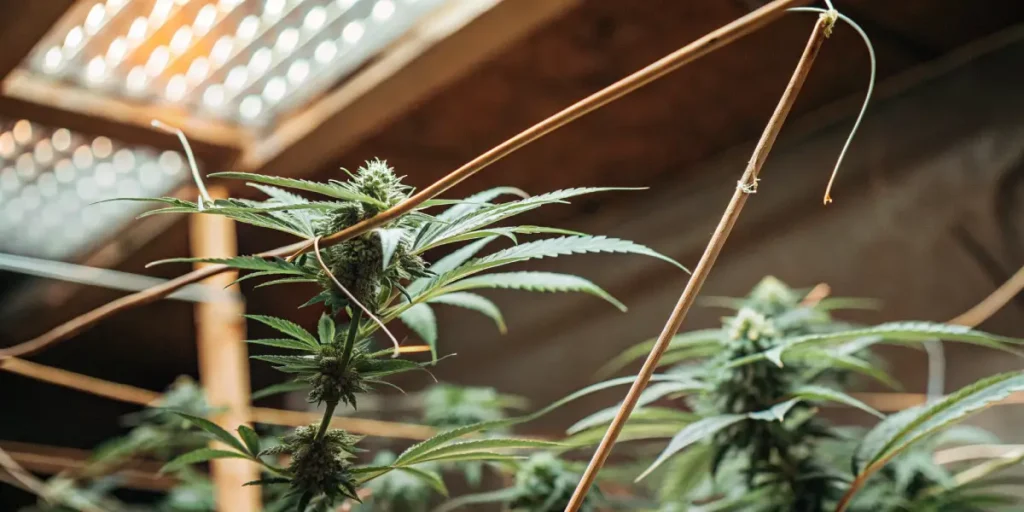
Choosing the Right Time
To avoid beginner cannabis plant training errors, it’s crucial to recognize the plant’s growth stages. Vegetative growth is the ideal time for most training methods, as the plant has ample time to recover before flowering. During this phase, cannabis plants like White Widow can be trained to maximize light penetration and airflow.
Training at the wrong time can lead to a host of issues, including reduced yields and poor-quality buds. Monitor your plants closely to determine the best timing for each training method. For new growers, keeping a growth journal can help track these stages and fine-tune techniques over time.
Choosing the right time also involves understanding environmental conditions. Factors such as temperature and humidity can influence the optimal timing for training practices. By synchronizing environmental controls with training schedules, growers can enhance plant resilience and growth.
Additionally, consulting with more experienced growers or resources can provide insights into the best practices for timing. Sharing knowledge within the community can expedite learning and help newcomers avoid the common pitfalls associated with poor timing decisions.
Knowing the growth cycle of your specific strain is also important. Some strains have longer vegetative periods, allowing more time for training. Strains from Blimburn Seeds come with detailed growth information, helping growers plan their training schedules effectively.
Improper Techniques
Using improper techniques is another common cannabis plant training error. It’s vital to use the right methods for the specific strain and growth conditions. Misapplying techniques can lead to broken branches, stunted growth, and reduced yields.
For instance, high-stress training (HST) methods like super cropping should only be done on healthy, vigorous plants. This involves pinching and bending to break the inner fibers without damaging the outer skin, encouraging stronger growth. However, applying too much force can break branches completely, setting back the plant’s development.
Improper techniques often arise from a lack of understanding of the plant’s biology. Before attempting high-stress methods, growers should familiarize themselves with fundamental concepts of plant anatomy and growth. This foundational knowledge aids in applying techniques correctly and minimizing the risk of damage.
Moreover, each strain may respond differently to certain techniques, making it crucial to tailor approaches based on specific characteristics. By experimenting and adjusting methods, growers can develop a personalized training regimen that maximizes yield while minimizing plant training mistakes cannabis efforts.
Mastering Techniques for Success
To avoid these pitfalls, start with low-stress techniques like LST, which involve gently bending branches to create a more even canopy. This method is ideal for beginners and can significantly improve light exposure without stressing the plant. Over time, as you gain confidence, gradually incorporate high-stress methods.
It’s also important to tailor techniques to the specific needs of the strain. Gorilla Glue, for example, responds well to both LST and topping, making it versatile for different growing conditions. Experimenting with different methods on various strains can lead to better results and more robust plants.
Mastering techniques requires both practice and adaptation. By starting with simpler methods, growers can build confidence and gradually introduce more complex techniques. This gradual progression helps in understanding how different methods impact plant health and yield.
Additionally, seeking feedback from other growers can be invaluable. Engaging in forums or grower communities allows for the exchange of successful strategies and helps identify common cannabis plant training errors. This collaborative approach fosters learning and innovation in cultivation practices.
Always ensure your plants are healthy before applying any training method. A well-fed and properly watered plant can handle more stress. Keep an eye on nutrient levels and environmental conditions to support the plant’s recovery post-training.
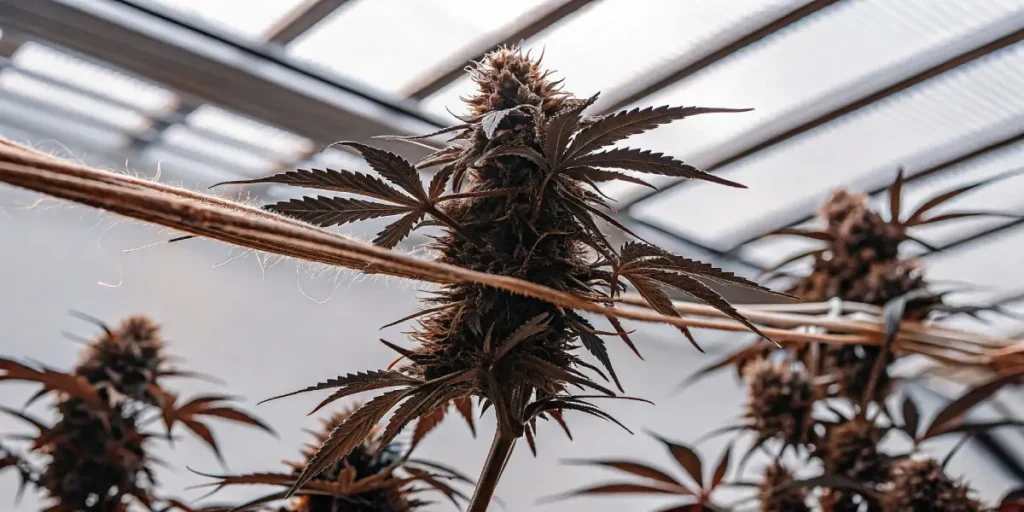
FAQs About Plant Training Mistakes in Cannabis
What are some common cannabis plant training errors?
Common mistakes include overtraining, using improper techniques, and training at the wrong time. Overtraining can stress the plant, leading to stunted growth or hermaphroditism. Improper techniques may cause physical damage, while incorrect timing can result in poor yields.
New growers can avoid these errors by starting with low-stress techniques like LST. It’s crucial to understand the growth stages of your plants and adjust training methods accordingly. Monitoring your plants daily and keeping a growth journal can help refine your techniques over time.
Knowing the specific needs of the strain can further prevent these common cannabis plant training errors. By tailoring methods to the strain’s characteristics, growers can enhance plant health and avoid unnecessary stress.
Moreover, leveraging resources like those provided by Blimburn Seeds can offer detailed insights into optimal training methods and timing, reducing the likelihood of encountering plant training mistakes cannabis growers often face.
How can I correct plant training mistakes in cannabis?
If you’ve overtrained your plants, give them time to recover by reducing manipulation and ensuring optimal growing conditions. Observing signs of stress, such as drooping leaves, can guide adjustments to your training schedule.
For incorrect timing or techniques, identify the specific issue and adapt your approach. Researching strain-specific growth habits can inform better timing and method selection. Blimburn Seeds offers detailed growth information that can help with planning and correcting errors.
Correcting these mistakes also involves a willingness to learn and adapt. By remaining flexible and open to new information, growers can continuously improve their practices and prevent future errors.
Engaging with the growing community can provide additional support. Sharing experiences and solutions can help cultivate a deeper understanding of how to correct plant training mistakes in cannabis effectively.
Are there cannabis plant training pitfalls to avoid with specific strains?
Yes, different strains respond uniquely to training methods. For example, White Widow benefits from early LST to promote bushy growth, while Gorilla Glue can handle more aggressive techniques like topping and super cropping. Tailoring methods to the strain can prevent pitfalls.
Reviewing the strain’s growth characteristics helps determine the appropriate training methods and timing. Blimburn Seeds provides valuable insights into each strain’s needs, allowing growers to avoid common pitfalls and maximize their plants’ potential.
Each strain’s genetic makeup influences its ideal training approach. By understanding these genetic traits, growers can predict which techniques will be most effective and avoid unnecessary plant training mistakes cannabis enthusiasts often encounter.
Experimenting with various methods on a small scale can also provide insights into what works best for a particular strain. This trial-and-error approach ensures that growers can tailor their techniques to achieve the best possible outcomes.
What tools can help avoid beginner cannabis plant training errors?
Using the right tools is essential to prevent mistakes. Soft plant ties, clean pruning shears, and sanitized equipment reduce the risk of damaging plants. These tools also help maintain plant health and prevent disease.
Regularly checking and maintaining equipment ensures effective and safe training. Investing in quality tools can make a significant difference in the success of your cannabis plant training efforts.
Quality tools not only facilitate precise training but also minimize the risk of introducing pathogens or diseases. By maintaining high standards of hygiene and tool care, growers can safeguard their plants’ health.
Moreover, as technology advances, new tools and resources become available. Staying informed about these innovations can provide growers with additional methods to improve their training practices and avoid common cannabis plant training errors.
Can environmental factors cause plant training mistakes in cannabis?
Yes, environmental factors like temperature, humidity, and light can impact plant training success. Plants under environmental stress are less tolerant of training, making it crucial to maintain stable conditions.
Ensuring your grow room is optimized for cannabis can prevent stress-related issues. Proper ventilation, consistent light cycles, and adequate watering are key. Understanding and controlling these factors will enhance your training results.
Environmental factors play a significant role in plant health and response to training. By closely monitoring and adjusting these conditions, growers can create an environment conducive to successful training.
Additionally, knowing the interplay between environmental conditions and plant responses can help growers anticipate potential issues. This foresight allows for preemptive adjustments, reducing the likelihood of encountering training-related problems.


